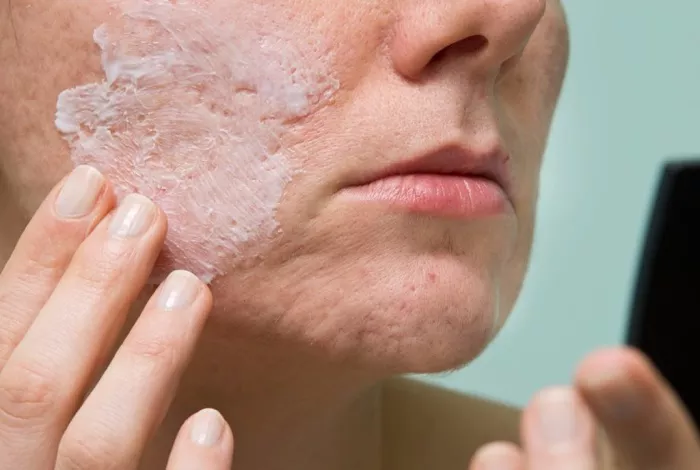Scars resulting from stitches, though a common consequence of various surgical procedures, can sometimes pose aesthetic and functional concerns. Advances in plastic surgery have opened new possibilities for scar revision, offering individuals the opportunity to address and potentially reduce the visibility of scars associated with stitches. This comprehensive guide explores the intersection of plastic surgery and scars from stitches, aiming to answer the question: Can plastic surgery remove scars from stitches? From understanding the nature of scar formation to the array of plastic surgery interventions, we delve into the multifaceted landscape of scar revision to shed light on potential solutions for those seeking improvement in scar appearance.
Understanding Scar Formation
The Healing Process and Scar Formation
The formation of scars is an inherent part of the body’s natural healing process. When the skin is injured, whether through surgery, trauma, or other means, the body initiates a cascade of events to repair the damage. Stitches are commonly used in surgical procedures to align and secure the edges of an incision, facilitating optimal healing. However, the resulting scar can vary in appearance and may be influenced by factors such as genetics, wound care, and the individual’s healing response.
Types of Scars from Stitches
Scars resulting from stitches can take various forms, including linear scars, hypertrophic scars, and keloids. Linear scars are typically thin and may fade over time, becoming less noticeable. Hypertrophic scars are raised and thickened but are generally confined to the boundaries of the original incision. Keloids, which extend beyond the original wound site, can be more challenging to manage due to their tendency to grow beyond the initial scar area.
The Role of Plastic Surgery in Scar Revision
Scar Excision and Revision
Scar excision is a common plastic surgery technique employed for scar revision, including scars resulting from stitches. During scar excision, the surgeon removes the existing scar tissue, allowing for the rejoining of the skin in a manner that minimizes tension and optimizes healing. Scar revision may also involve techniques such as Z-plasty or W-plasty, which reposition the scar to align with natural skin lines, reducing tension and improving the overall cosmetic outcome.
Laser Therapy for Scar Reduction
Laser therapy has emerged as a powerful tool in scar reduction, including scars resulting from stitches. Different types of lasers can be utilized to address various aspects of scar appearance, such as color, texture, and thickness. Laser therapy works by targeting specific components of the scar tissue, promoting collagen remodeling and creating a more uniform skin surface. This approach is often effective for both fresh and mature scars.
Dermal Fillers for Scar Improvement
In certain cases, dermal fillers may be used as part of scar revision for scars resulting from stitches. Dermal fillers, containing substances like hyaluronic acid, are injected beneath the scar to elevate it to the level of the surrounding skin. This technique can help create a smoother surface and reduce the visibility of the scar. The effects are temporary, and repeated sessions may be required for sustained improvement.
Addressing Scars at the Right Moment
Early Intervention for Optimal Results
The timing of plastic surgery interventions is crucial for scar revision. Early intervention, performed once the wound has healed, can yield more favorable outcomes. Addressing scars resulting from stitches in their early stages allows for a proactive approach, preventing the progression of scar tissue and mitigating potential complications. Early intervention is particularly relevant for linear scars, as they may respond more effectively to surgical and non-surgical interventions.
Secondary Procedures for Mature Scars
For scars resulting from stitches that have matured over time, secondary plastic surgery procedures may still bring about significant improvements. While scar tissue undergoes changes and stabilization over several months or even years, secondary procedures can optimize scar appearance and function. The decision to pursue secondary procedures is influenced by factors such as the scar’s characteristics and the individual’s goals.
A Tailored Approach to Scar Management
Adjunctive Therapies for Enhanced Results
Plastic surgeons often adopt a multimodal approach to scar management, combining surgical interventions with adjunctive therapies to optimize outcomes. Adjunctive therapies may include laser treatments, corticosteroid injections, silicone-based products, or pressure garments. These additional interventions work synergistically to address various aspects of scar appearance and support the overall success of scar revision.
Patient-Centric Approach
A patient-centric approach is fundamental in developing an individualized treatment plan for scars resulting from stitches. Plastic surgeons collaborate closely with patients to understand their goals and expectations for scar improvement. The characteristics of the scar, the patient’s skin type, and any potential contraindications are carefully considered to tailor the approach for optimal results. This patient-centric approach ensures that the chosen interventions align with the individual’s desires and lifestyle.
Postoperative Care and Recovery
Postoperative Monitoring and Care
Postoperative care is a critical component of the scar revision process for scars resulting from stitches. Plastic surgeons closely monitor the healing progress and provide specific postoperative care instructions. These instructions may include wound care, scar massage techniques, and the use of recommended skincare products. Adhering to postoperative care guidelines contributes to optimal healing and scar maturation.
Scar Massage and Skincare
Scar massage is often recommended as part of postoperative care for scars resulting from stitches. Gentle massage techniques can help break down scar tissue, improve blood circulation, and promote a more pliable scar. Skincare products, such as those containing silicone or other recommended ingredients, may be advised to further support scar softening and hydration.
Challenges and Considerations
Scar Recurrence and Persistence
While plastic surgery interventions can bring about significant improvements, it’s essential to acknowledge that scar recurrence or persistence is possible, especially in the case of keloids. Plastic surgeons may employ additional strategies, such as corticosteroid injections or radiation therapy, to mitigate the risk of recurrence and optimize long-term outcomes. Setting realistic expectations regarding the extent of scar improvement is crucial for patient satisfaction.
Psychosocial Impact
The psychosocial impact of scars resulting from stitches should not be underestimated. Individuals may experience emotional and psychological challenges related to body image and self-esteem. Plastic surgeons, often working in collaboration with mental health professionals, address these aspects of care to support individuals in their holistic recovery. Open communication and counseling play a pivotal role in helping patients navigate the emotional dimensions of scar revision.
Conclusion
In conclusion, the intersection of plastic surgery and scars resulting from stitches offers a pathway to empowerment for individuals seeking scar improvement. Plastic surgeons employ a range of techniques, from scar excision and laser therapy to dermal fillers, to address the diverse aspects of scar appearance and functionality. The timing of interventions, the integration of adjunctive therapies, and a patient-centric approach contribute to the success of scar revision.
Can plastic surgery remove scars from stitches? The answer lies in the multidimensional and tailored approach that plastic surgeons adopt. As the field of plastic surgery continues to advance, individuals with scars resulting from stitches can embark on a journey toward scar improvement, enhanced confidence, and an improved quality of life. The collaboration between skilled plastic surgeons, supportive healthcare professionals, and resilient individuals paves the way for transformative solutions in the realm of scar revision.
[inline_related_posts title=”You Might Be Interested In” title_align=”left” style=”list” number=”6″ align=”none” ids=”3540,3538,3475″ by=”categories” orderby=”rand” order=”DESC” hide_thumb=”no” thumb_right=”no” views=”no” date=”yes” grid_columns=”2″ post_type=”” tax=””]
































